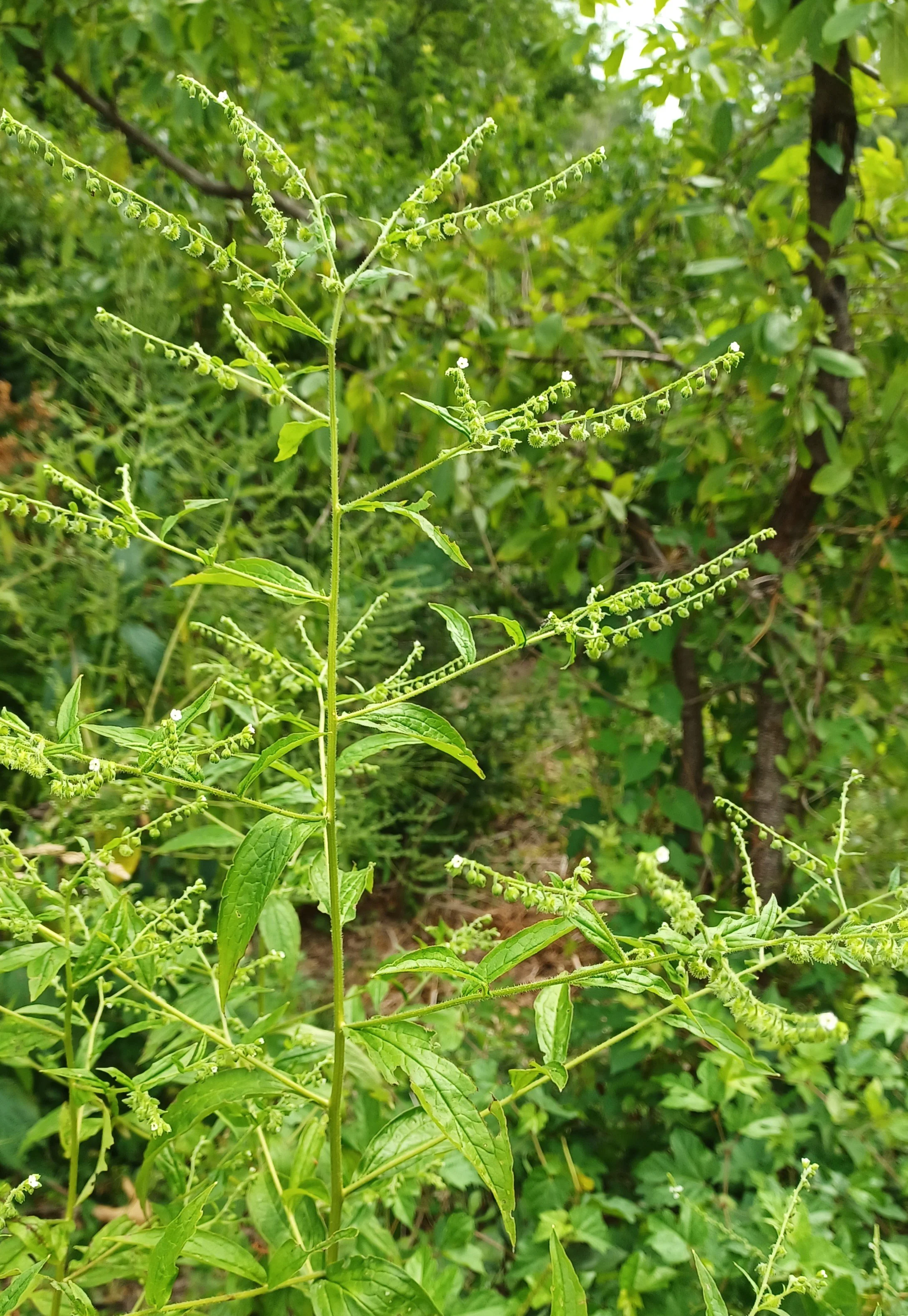All That’s Good: A Summer Read that Goes Well with Weeds
With an armful of weeds, I paused in the middle of the woods and let the words of the final chapter of All That’s Good by Hannah Anderson wrap around me. I smiled, marveling again at how the audio book had provided the perfect food for thought as I combed our property searching out my archnemesis of the plant world–Virginia stickseed.
The Trouble with Virginia Stickseed
At first glance, Virginia stickseed might seem innocent enough. Not particularly notable or noteworthy. But if you run into them–literally–late in the summer when they have formed their seeds, you will find yourself plastered with “stickies,” small burrs that are perfectly designed to stick with unrelenting ferocity to any fabric–or worse, hair!--that is unfortunate enough to brush against it.
It has become apparent that our woods provide the perfect environment for any one of these seeds that finds its way to the forest floor to grow and thrive the following year. That means that every year the stickie trouble has increased. Each year we spend more time plucking burrs from mesh shorts and baseball hats. Each year we toss more socks and t-shirts that are deemed not worth the effort of de-stickying.
In past seasons, my husband has spent time clearing some of the worst patches, and things were getting better, but a big storm in 2020 seemed to blow in more seeds and things started to get out of control again. Last year, I decided I needed to enter the battle with him. The prospect of victory seemed slim, but I geared up nevertheless. My armor consisted of my burr resistant raincoat (very hot in the heat of August!), Andrew’s torn work pants that would be thrown away afterwards, a plastic bag covering my hair and tucked under a baseball hat (also to be sacrificed when the job was done). We spent hours and hours over the course of a few weeks combing the woods, yanking stickseed out of the ground, and stuffing them into garbage cans.
The fruit of our labor was evident this year in the fact that there were less plants. Much less. But much less of a lot is still a lot, so this summer we took to the battlefield again. But this time we worked smarter, not harder.
This year we picked them in July, before they seeded their sticky little seeds. This meant that no particular outfit was required and we could drop them on the ground instead of collecting them. In other words–it was much, much, much easier. The only challenging part was to identify the plant without the telltale burrs, but as Andrew realized early in July, that wasn’t that challenging for us.
We had spent so much time seeking them out in past years, bent low so many times with face up close to stalk, and stem, and leaves, that we no longer need the seed in order to identify Virginia stickseed. We now know the sturdy stalk and the green, slender leaves on the upper reaches of the stalk and the black, wilted leaves that often cling to the bottom. We know the way the stem reaches out, and how the small white flowers blossom, threatening at any minute to turn into those nasty little burrs. We have come to know those plants and are able to recognize them, even if they are tucked into a patch of similar looking plants, even before they are covered with burrs.
And that–practicing the art of discernment–is what All That’s Good is all about.
All That’s Good
As I was utilizing the eye I had developed for botanical discernment, the words of Hannah Anderson trained my heart in the broader art of discernment. Throughout the book, her insights are deep and her logic is strong. Her prose is clear and her anecdotes are relatable. And most importantly, her gaze is resolutely fixed upon Jesus.
The Apostle Paul stresses the importance of developing a discerning eye when he exhorts the church in Philippi to think about what is true, noble, just, pure, lovely, and commendable (Philippians 4:8). Anderson spends a chapter exploring each of these displays of goodness knowing, as Paul did, that when the focus of our inner life centers on all that’s good, we deepen our knowledge and understanding of God, the creator of all goodness. Through the evidence and displays of his goodness, we come to more intimately know the One who is good.
As I stood listening to the final words, with an armful of stickseed, I wondered along with Anderson as she asked; “What if we could see the world as God sees it—in all its brokenness and beauty—and in seeing, be able to do more than endure this life?”
We are meant to do more than merely endure. We are meant to see goodness in the broken cracks of this world and in doing so obtain glimpses of the eternal goodness that awaits us when all is made new. We are meant to thrive.
As I reached down to pull out yet another weed, I realized that, yes, in order to thrive we must pull out the weeds, giving goodness all the room it needs to bloom and grow. And in order pull those weeds, we must first be able to discern “all that’s good.”


